Introduction
Navigating the Android ecosystem requires a keen understanding of its multi-faceted environment, which is critical for any Android app developer aiming to excel. The platform's architecture encompasses a variety of components and technologies that are essential to comprehend for successful app development. To truly enhance an application's performance, focusing on elements such as app startup time, build time, and pipeline time is vital.
Moreover, the landscape of Android app development is continually enriched by Google's updates and features. Recent enhancements to the Google Play Store have made it an even more dynamic platform for developers. With Android's user base having grown to an astounding 3.3 billion worldwide, the importance of adapting to the latest advancements, such as artificial intelligence, cannot be overstated.
Effective application of product analytics tools can play a pivotal role in app development, enabling developers to identify popular features and gauge user engagement. Staying abreast of these evolving technologies and understanding the complexity of background work and task management will empower developers to maximize their app's potential on the Android platform.
Understanding the Android Ecosystem
Navigating the Android ecosystem requires a keen understanding of its multi-faceted environment, which is critical for any Android app developer aiming to excel. The platform's architecture encompasses a variety of components and technologies that are essential to comprehend for successful app development. To truly enhance an application's performance, focusing on elements such as app startup time, build time, and pipeline time is vital. As evidenced by case studies such as the development of a custom analytics tool named App Size, the standard tools like APK Analyzer or Android Studio may fall short in addressing complex optimization projects. This underscores the importance of 'measure' as a foundational principle for improvement, because only what is measured can be improved.
Moreover, the landscape of Android app development is continually enriched by Google's updates and features. Recent enhancements to the Google Play Store, including a visual overhaul and the introduction of new video capabilities and animations, have made it an even more dynamic platform for developers. Google's commitment to supporting developers is further illustrated by the introduction of new categories in their annual Best of Play awards, such as 'Best with AI' and 'Best multi-device app and game.' These initiatives reflect the platform's evolution and the opportunities for developers to innovate and meet emerging user needs.
With Android's user base having grown to an astounding 3.3 billion worldwide, the importance of adapting to the latest advancements, such as artificial intelligence, cannot be overstated. The platform's journey over the past 15 years has been marked by constant innovation, setting the stage for reimagining smartphone user experiences. This transformative trajectory is not lost on industry veterans like Sameer Samat, who envisions a new chapter for Android driven by AI. As HarmonyOS makes inroads in the Chinese market, developers must also consider the global landscape and the challenges of winning over users beyond China, especially in the absence of Google Mobile Services.
Effective application of product analytics tools can play a pivotal role in app development, enabling developers to identify popular features and gauge user engagement. By utilizing platforms that offer real-time analytics and conversion rate analysis, developers can make informed decisions to refine their apps and cater to the needs of a diverse user base. Staying abreast of these evolving technologies and understanding the complexity of background work and task management will empower developers to maximize their app's potential on the Android platform.
Setting Up Your Development Environment
Setting up your Android development environment is a pivotal first step to launching your app creation journey. Android Studio, the official IDE for Android, is at the core of this setup, offering developers a powerful and intuitive suite of tools. When configuring Android Studio, it's crucial to create an Android Virtual Device (AVD), which simulates various Android devices, allowing you to ensure your app performs well across different hardware configurations.
To drive optimization in app development, measurement is key. A case study highlights the use of tools such as APK Analyzer and custom analytics like App Size to analyze and improve aspects like app startup time. This aligns with the principle that 'If you can’t measure it, you can’t improve it,' underscoring the importance of precise analysis.
The mobile devices we use are becoming increasingly powerful, which is a testament to the ongoing advancements in technology. This growth in capability allows developers to create more sophisticated and engaging Android applications, leveraging the evolving features of the devices.
This year, Google Play has introduced a refreshed visual identity, enhanced video functions, and dynamic animations, enriching the user experience and providing developers with new avenues for app promotion and user engagement. With continuous improvements slated for the future, developers can anticipate a platform that keeps pace with the latest industry demands.
In terms of layout, Android offers various methods to design user interfaces, such as LinearLayout for arranging views in a line and RelativeLayout for positioning elements relative to each other. Understanding and applying these layout techniques is vital for creating intuitive and responsive user interfaces.
Developers are encouraged to stay informed on the latest trends and tools in the tech industry. Reports and surveys, like the State of Developer Ecosystem, offer valuable insights into programming languages, frameworks, and developers' attitudes toward emerging technologies like AI, helping professionals navigate the ever-changing tech landscape.
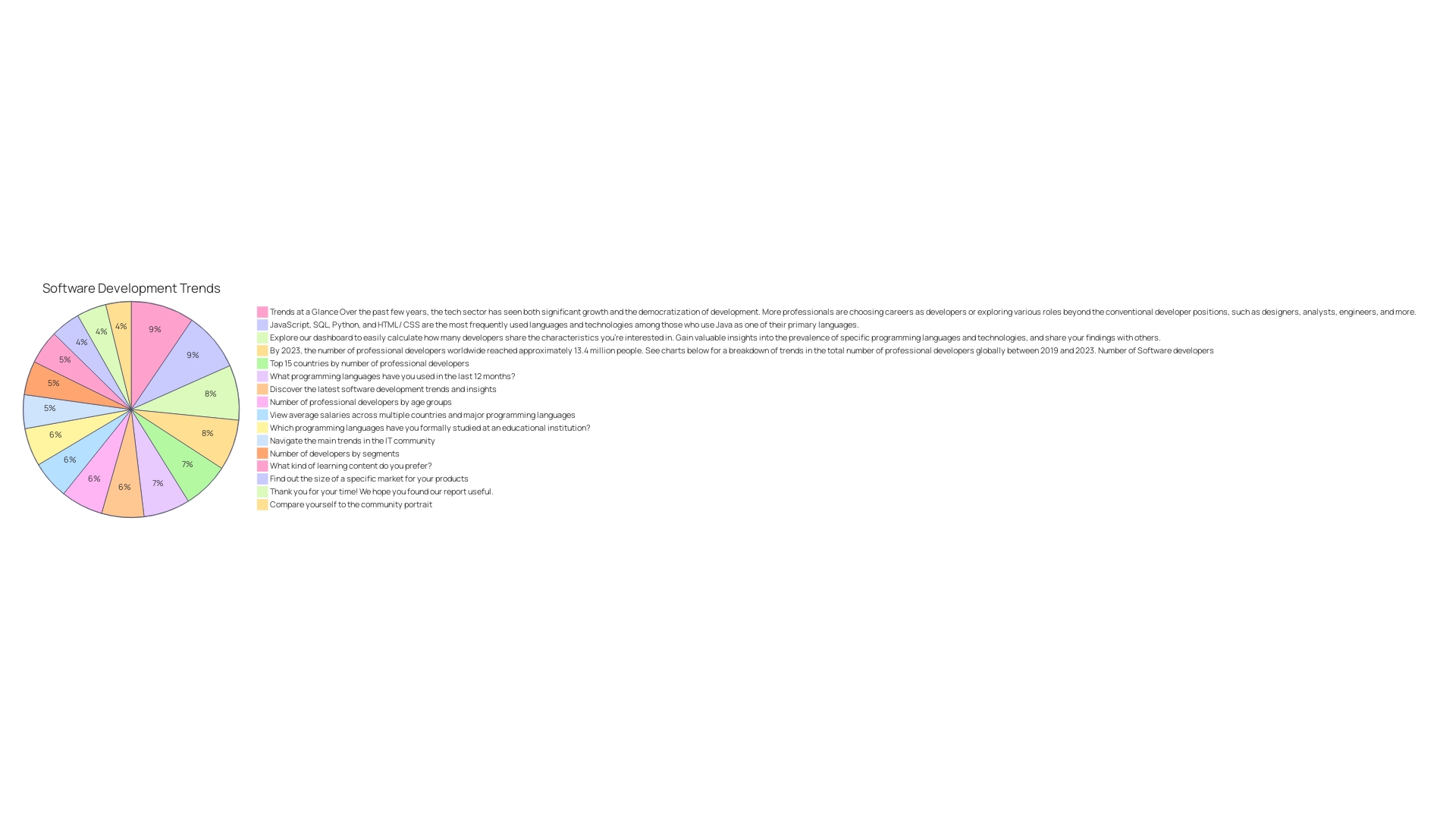
Basic Components of Android Apps
Building an Android app involves integrating various core components to craft a seamless user experience. Activities serve as the entry point for user interactions, functioning as the primary mechanism for user interface presentation. Services run in the background to perform long-running operations or to handle network transactions, independent of a user interface. Broadcast receivers allow your app to listen for and respond to system-wide broadcast announcements, while content providers offer a structured interface to app data.
When constructing an app, it's essential to measure and analyze its performance. Tools like APK Analyzer and Android Studio can aid in the assessment of the app binary, but sometimes custom solutions like App Size are developed for more comprehensive analysis. Innovative navigation solutions such as context-aware screens are crucial, especially in apps like the map-centric Android Rider Application developed within the Logistics Deliveries Tribe, which optimizes screen real estate on mobile devices.
Background work is an integral part of app development, allowing tasks to continue even when the app is not in the foreground. The Android platform provides the WorkManager library for setting up both simple and complex jobs, ensuring that tasks are completed efficiently and reliably.
The landscape of app development is continually advancing, with Google Play leading the charge in providing developers with new tools and features. These enhancements aim to enrich user experiences and bolster developer success, as highlighted by the recent updates to the Play Store and the introduction of new categories in the annual Best of Play awards.
In summary, understanding the interplay between activities, services, broadcast receivers, and content providers, along with effective performance measurement and background task management, is fundamental to developing successful Android applications that engage users and stand out in a crowded marketplace.
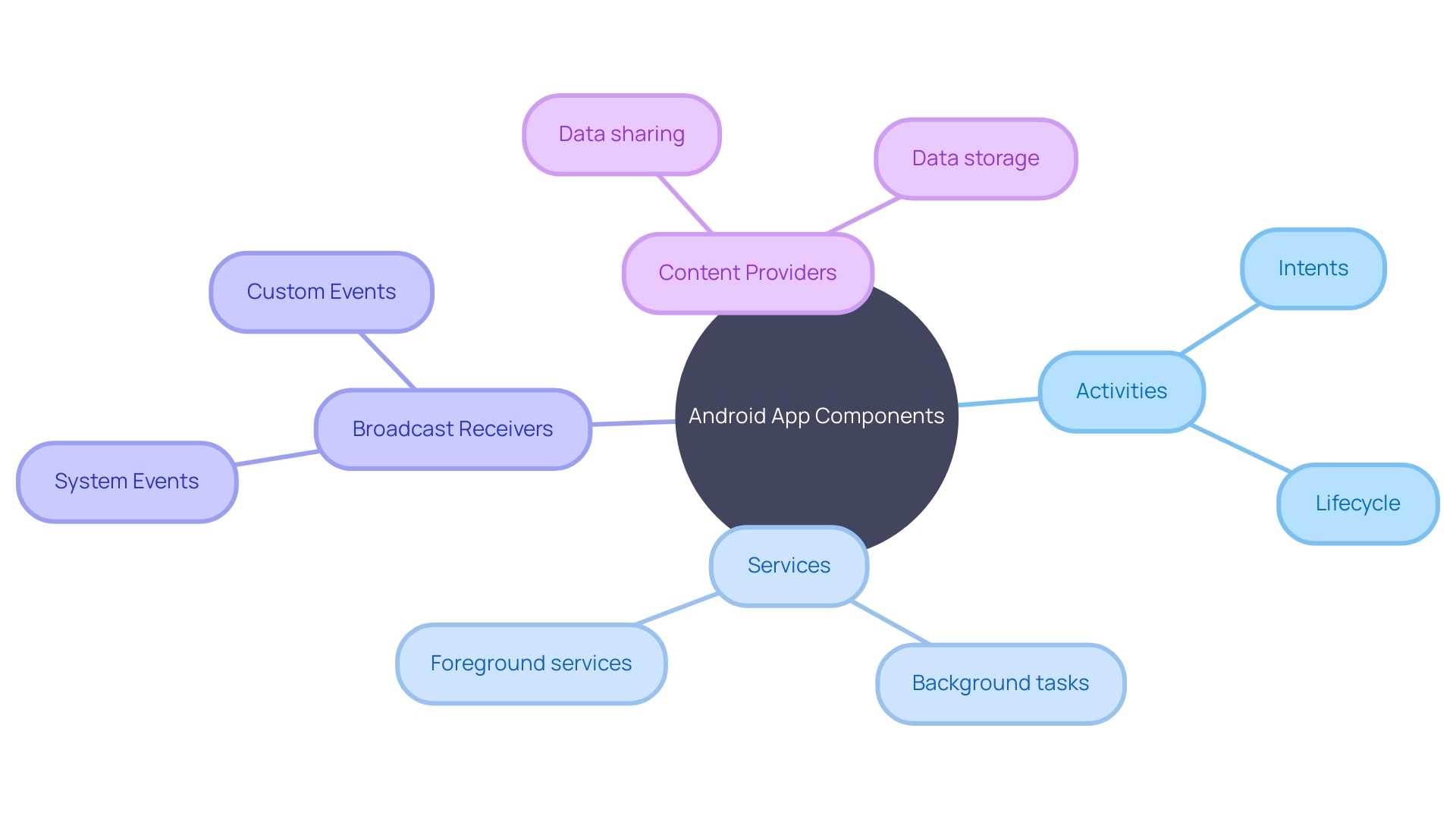
Design and Development of User Interface
A successful Android app hinges on not just its functionality but also the user interface (UI) and user experience (UX) it offers. The UI is the bridge between your app and your users, and it requires meticulous design to ensure it is both intuitive and visually appealing. This involves a careful selection of UI elements, layouts, and resources to create a seamless experience that resonates with users on an aesthetic and functional level.
UI/UX design is a critical factor in the success of mobile applications, as evidenced by High Voltage Trading (HVT)'s approach to brand identity. By focusing on an effective and authentic UI, HVT managed to establish a strong connection with their audience. Similarly, Nielsen's usability heuristics provide a valuable framework for identifying and solving usability problems, ensuring that users are kept informed and engaged.
Statistics show that over 50% of users will disregard a brand with a poorly designed mobile site, highlighting the importance of a well-optimized mobile UX for user engagement and retention. With mobile sites that load in two seconds boasting a 15% higher conversion rate, it's evident that users prioritize performance and speed.
Furthermore, a mobile-friendly site is not just about aesthetics; it is about the overall user journey. Francesca, head of digital at EPM Agency, emphasizes the importance of centering the user in the experience, driven by user behavior data and continuous iteration to enhance the customer journey.
In conclusion, the principles of UI design are not just about creating a visually appealing interface but also about ensuring that the app is intuitive, easy to navigate, and provides a positive overall user experience. By adhering to these principles, developers can create Android apps that not only stand out but also keep users coming back.
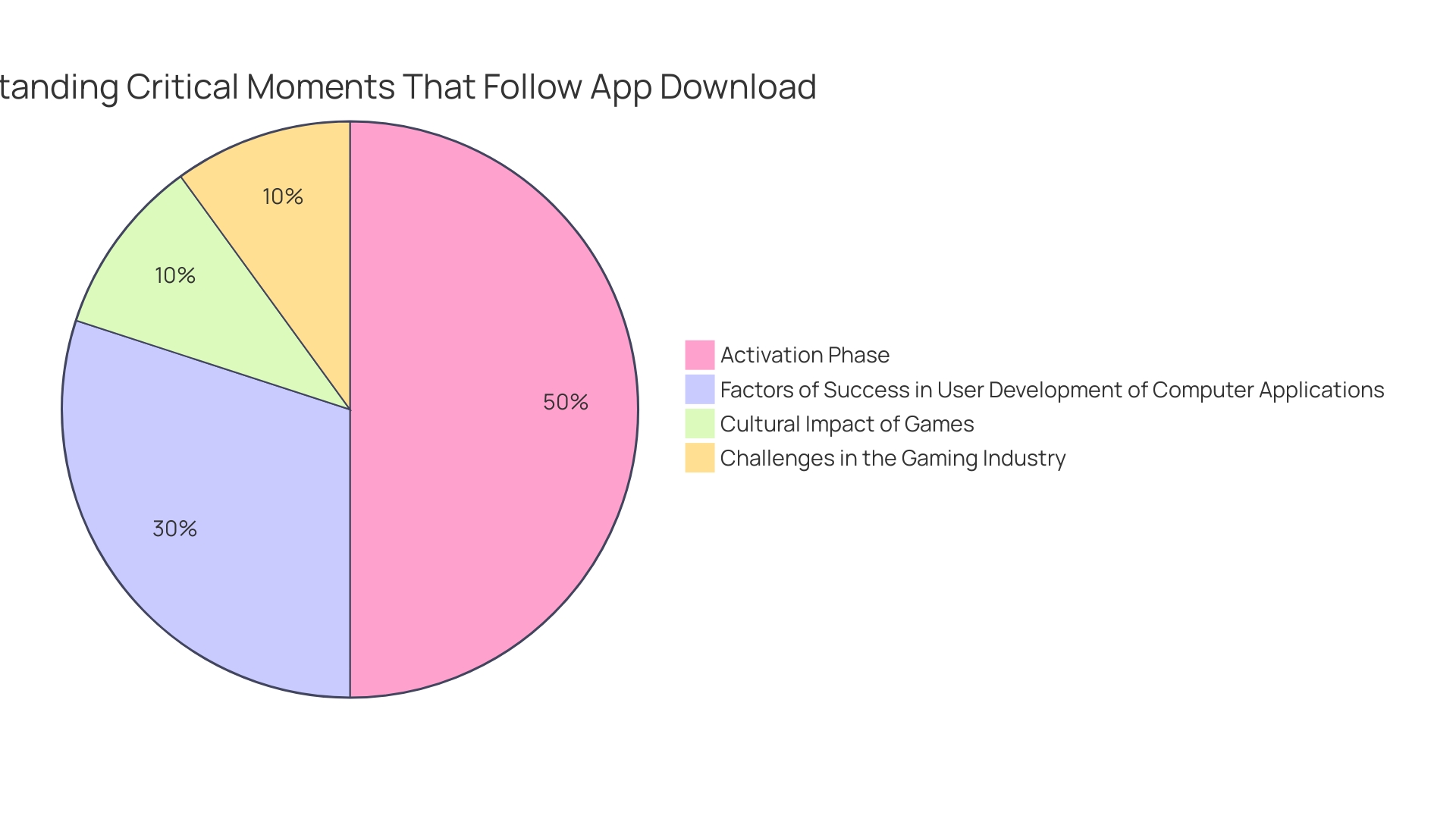
Data Storage and Persistence
As the app ecosystem continuously evolves, developers must embrace a variety of data storage and persistence methods to enhance the user experience. Android applications, frequently operating in the background, face system-imposed restrictions that necessitate efficient data management strategies. SQLite databases offer a robust, self-contained solution for storing structured data. They are ideal for complex data manipulation and can handle significant amounts of data without compromising performance.
Shared preferences are another method, best suited for storing simple key-value pairs. This approach is perfect for user preferences or settings, due to its simplicity and ease of use. As data persists across user sessions, it's a quick way to retrieve small pieces of data.
For unstructured data, file-based storage options are available. This is particularly useful when dealing with media or documents that don't fit into a structured database. Developers can choose between internal and external storage, depending on the privacy and space requirements of the application.
Effective data synchronization and backup are critical to ensuring data integrity and providing a seamless user experience, especially when considering the multi-device nature of users' interaction with apps. WorkManager is a powerful tool in the Android developer's arsenal, allowing for flexible scheduling of tasks that need to continue even when the app is not in the foreground.
Recent enhancements to the Google Play ecosystem, such as improved visual components and new discovery features, underscore the importance of staying current with the latest tools and trends. As developers aim to improve retention rates and user engagement, employing these data management techniques becomes increasingly vital. With billions of actions analyzed daily, understanding and implementing the right data persistence approach can significantly impact a game or application's success.
Development Process: Planning, Development, Testing, and Deployment
The creation of an Android application is akin to a journey, starting with the initial spark of an idea. It involves meticulously refining your concept by conducting market research, pinpointing a target audience, and delineating the app's primary features and functionalities. This initial phase is instrumental, as it establishes the strategic foundation upon which your entire project is built.
The process of developing an Android application encompasses a series of pivotal steps, each contributing to the final goal of launching a successful app on Google Play. Initially, the developer must crystallize the app idea, ensuring it fulfills a genuine need or resolves an existing problem. This is followed by crafting a detailed project plan that outlines the scope, designates timelines, and allocates necessary resources.
As the project moves forward, maintaining a user-centric approach is paramount. During the development phase, writing clean, maintainable code is crucial for both functionality and future scalability. Additionally, prioritizing user experience and security measures is essential to create an app that stands out in the crowded digital marketplace.
Testing is an indispensable step in the app development lifecycle. It allows developers to identify and rectify any issues before the app reaches the hands of users. This rigorous testing ensures a smooth, bug-free user experience.
Finally, deployment marks the transition from development to availability. It's a significant milestone where the app is introduced to the Google Play Store, ready to be discovered and downloaded by users. This year, Google Play has enhanced its platform with new visual components, video capabilities, and fluid animations, making it an even more attractive venue for developers to showcase their applications.
In light of recent trends and updates, developers should also be aware of the evolving digital landscape. Incorporating analytics, understanding user habits, and optimizing digital advertising strategies can provide a competitive edge.
By adhering to this structured approach, developers are equipped to navigate the intricate process of Android app development, transforming a nascent idea into a tangible, valuable application that resonates with users and thrives in the dynamic world of mobile technology.
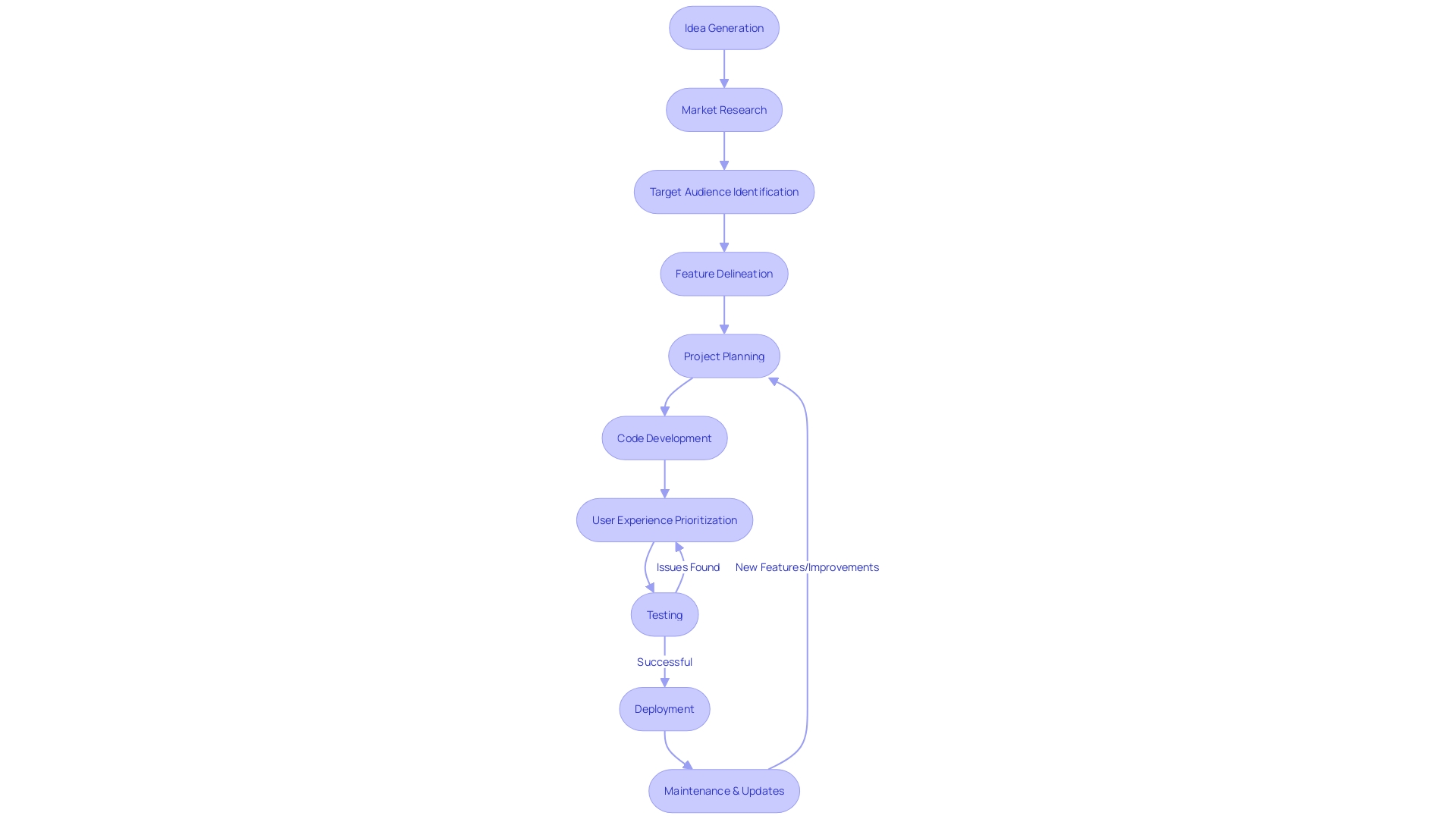
Analyzing Initial Requirements and Defining Project Scope
Crafting a successful mobile application begins with a meticulous approach to planning and defining the project's scope. It's essential to embark on this journey by conducting a deep dive into market research to understand your target audience's preferences and challenges. Analyzing competitors and employing surveys or interviews can unveil critical insights into user needs and market opportunities.
Subsequently, articulating a clear and detailed app roadmap is paramount. This strategic blueprint not only aligns stakeholders but also segments the development process into manageable phases, thus facilitating clear expectations and proactive risk management. A roadmap offers a visual representation of the app's life cycle, underscoring the importance of resource allocation and budget adherence to ensure timely and cost-effective delivery.
Moreover, the categorization of non-functional requirements into execution qualities such as security, usability, and safety, as well as evolution qualities like scalability and maintainability, is critical. Acknowledging that specifications are more frequently read than written, emphasis should be placed on clarity and quality from the outset to optimize reading time and preempt costly future amendments.
It is imperative to recognize that each requirement stems from an existing real-world challenge and that software development is a means to address it. Well-defined requirements are the linchpin of a successful app, as they encapsulate operational, functional, or design constraints and characteristics that are testable, measurable, and vital for acceptance.
The burgeoning mobile app market, projected to generate over $613 billion in revenue by 2025, underscores the lucrative potential of app development. While costs can vary greatly, understanding the multifaceted factors influencing development expenses is crucial. From basic personal blogs to complex enterprise-grade solutions, web app development costs are as diverse as the purposes they serve, each tailored to specific tasks and objectives.
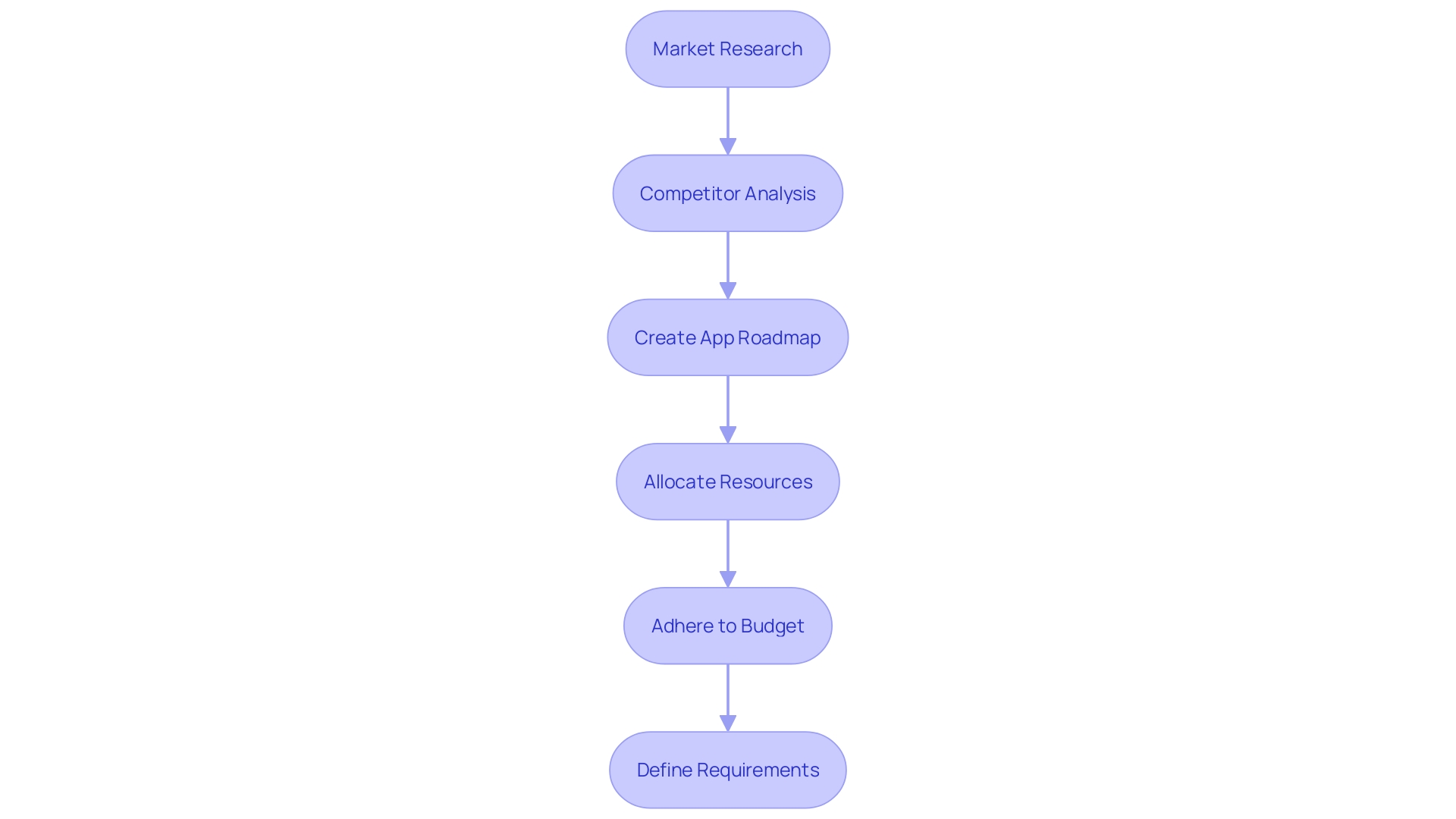
Selecting the Right Tools and Technologies
As the digital landscape evolves, Android application development continues to play a pivotal role in various sectors, from healthcare to retail. Mobile devices are now integral tools for professionals in managing information, decision-making, and patient monitoring, just as businesses are harnessing mobile apps to boost customer engagement and drive revenue. With the rapid adoption of smartphones, e-commerce growth, and innovative technologies like augmented reality, investing in mobile app development is essential for organizations to remain competitive and cater to the dynamic needs of their clientele.
Selecting the most suitable development tools and technologies is crucial for the success of your Android app project. Considerations such as the tool's performance reputation, examples of high-performing production apps, and compatibility with your specific use case are paramount. Moreover, the integration of Application Programming Interfaces (APIs) can significantly enhance your app's functionality, user experience, and service integration. APIs allow developers to utilize device features such as cameras, GPS, and sensors to create immersive user experiences and enable network communication through protocols like HTTP and Retrofit.
With the tech sector's growth and the democratization of development, the landscape now includes a broader spectrum of roles beyond traditional developer positions. Insights from over 26,000 respondents in the State of Developer Ecosystem report reveal current trends in programming languages, tools, and frameworks. The report also highlights the developer community's engagement with Artificial Intelligence (AI) tools, with 77% of developers using ChatGPT and 46% using GitHub Copilot, underscoring the industry's lean towards AI-integrated tools. As the sector advances, automated quality control and a comprehensive understanding of code progression, including deployment environments and remediation, will become increasingly important.
App Resources and Alternative Resources for Device Configurations
Android devices, renowned for their diverse array of shapes, sizes, and configurations, present unique challenges to developers aiming to craft universally compatible applications. Android's commitment to innovation is evident in the recent announcements of new Compose APIs for crafting adaptive layouts. These APIs, now in Beta, are designed to facilitate the building of layouts that seamlessly adjust when shifting between different screen sizes, from compact phones to expansive tablets and foldables. The introduction of scaffolds within these APIs ensures that apps can intuitively adapt to varying window sizes, adhering to Material guidelines for an optimal user experience.
Zoom's recent endeavors highlight the imperative nature of such adaptability. With a user base increasingly favoring tablets, Zoom's engineering team has prioritized the optimization of their application across the diverse Android ecosystem, which encompasses over 270 million large screens and foldables. This strategic focus on inclusivity ensures that users relish a frictionless experience on whichever device they choose.
The story of Showmax further underscores the necessity for adaptability in app development. Catering to a mobile-first African market, Showmax engineers were tasked with developing apps that could traverse a multitude of platforms with a limited team. The challenges they encountered, such as the limitations of the existing Leanback library, sparked extensive research and customer interviews, ultimately leading to the realization that a comprehensive app rewrite was essential to overcome these barriers.
The ever-growing global marketplace demands that apps not only accommodate various device formats but also offer localized content to resonate with international audiences. This calls for developers to engineer applications that can fluently speak the language of culture, from English to Mandarin, ensuring that users worldwide can experience the product in their local languages.
With the proliferation of Android usage and the advent of new development tools, the landscape of mobile application development is continuously evolving. Developers and businesses are equipped with the resources to create digital solutions that are not just functional, but are also tailored to the diverse needs of a global user base.
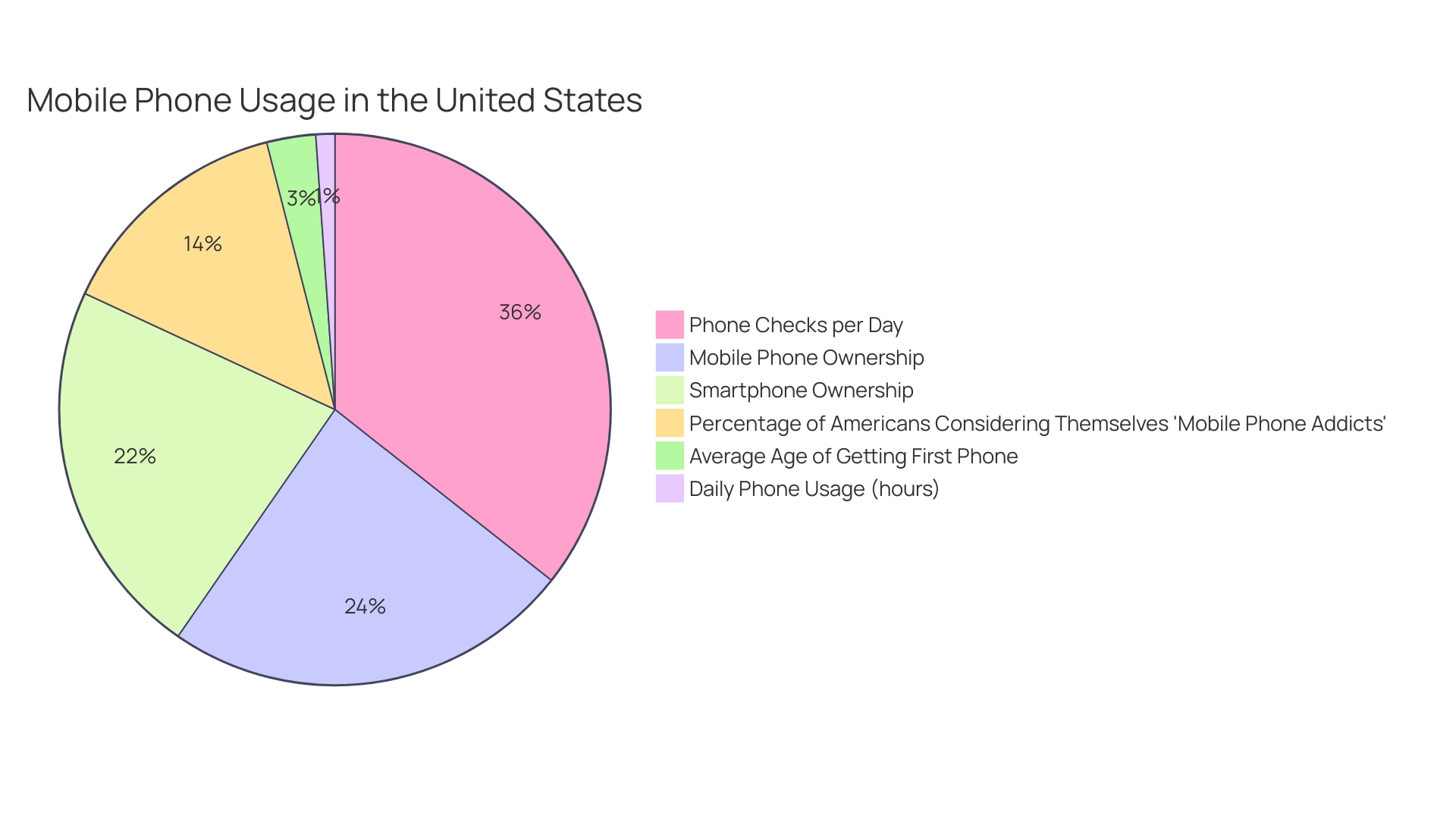
Keeping Up with the Latest Trends and Best Practices
The art of Android application development is a dynamic field, propelled by constant innovation and a user-centric approach. With an emphasis on empathy and understanding user needs, the best Android apps are born from identifying and resolving specific pain points, motivations, and goals. This deep comprehension is achieved through meticulous research methods such as interviews, surveys, and observational studies.
To craft a compelling mobile experience, developers must first conceptualize the app through a well-defined idea that addresses a gap or need in the market. This vision lays the groundwork for all subsequent design and development decisions. Strategic thinking and a user-focused mindset are essential to prioritize user experience and security, ultimately resulting in an app that provides genuine value.
As you embark on your Android development project, it's crucial to identify your target audience. Leveraging tools like app analytics, keyword research, and competitor analysis, you can gather vital data to inform your design choices and marketing strategies. These insights help in tailoring your app to the specific preferences and behaviors of your users.
The Android development ecosystem is also abuzz with technological advancements. APIs, for instance, are revolutionizing the way apps function by enhancing their capabilities and integrating various services. Whether it's harnessing device features like cameras and GPS or facilitating network communication through HTTP and Retrofit, APIs empower developers to create richer, more interactive user experiences.
Furthermore, the relentless pace of mobile device releases and updates underlines the importance of staying current with industry trends. With new phones on the horizon and continuous improvements to platforms like Google Play, developers have ample opportunity to innovate and align their apps with the latest trends and user expectations.
In conclusion, the trajectory of Android application development is shaped by a blend of empathy-driven design, strategic planning, and cutting-edge technology. By understanding and applying these principles, developers can navigate the mobile app development process with confidence and creativity.
Testing and Launching Your Android App
Ensuring the quality and reliability of an Android application involves a comprehensive approach to testing, which is not only about finding bugs but also about enhancing user satisfaction and ensuring seamless performance across diverse devices and network conditions. Incorporating unit tests provides a solid foundation by verifying individual components for correctness. Integration testing takes this further by ensuring that these components work together as expected.
User interface testing is equally important, as it verifies that the user interactions with the application produce the desired results on the screen. This is where tools and frameworks come into play, allowing developers to automate tests and simulate user behavior under various conditions.
To truly measure the impact of optimizations such as improved app startup and build times, one must embrace the principle of 'MEASURE' - a cornerstone for any improvement initiative, as it's been said, 'If you can't measure it, you can't improve it.' This is why our team, dissatisfied with existing tools' limitations, created a custom analytics tool, App Size, to conduct a thorough analysis of the app binary, thus ensuring a more precise and tailored optimization process.
As we prepare the app for launch, we're reminded of the words from industry experts who emphasize that software testing is indispensable for achieving the highest standards of performance and functionality. It's not just about detecting defects; it's about ensuring the app functions as intended and meets user expectations.
Lastly, the submission to the Google Play Store is an essential step in the journey of app development. It's a culmination of meticulous planning, testing, and optimization, ensuring that when users download the app, they are greeted with an experience that has been honed to near perfection, ready to meet the demands of tomorrow's users today.
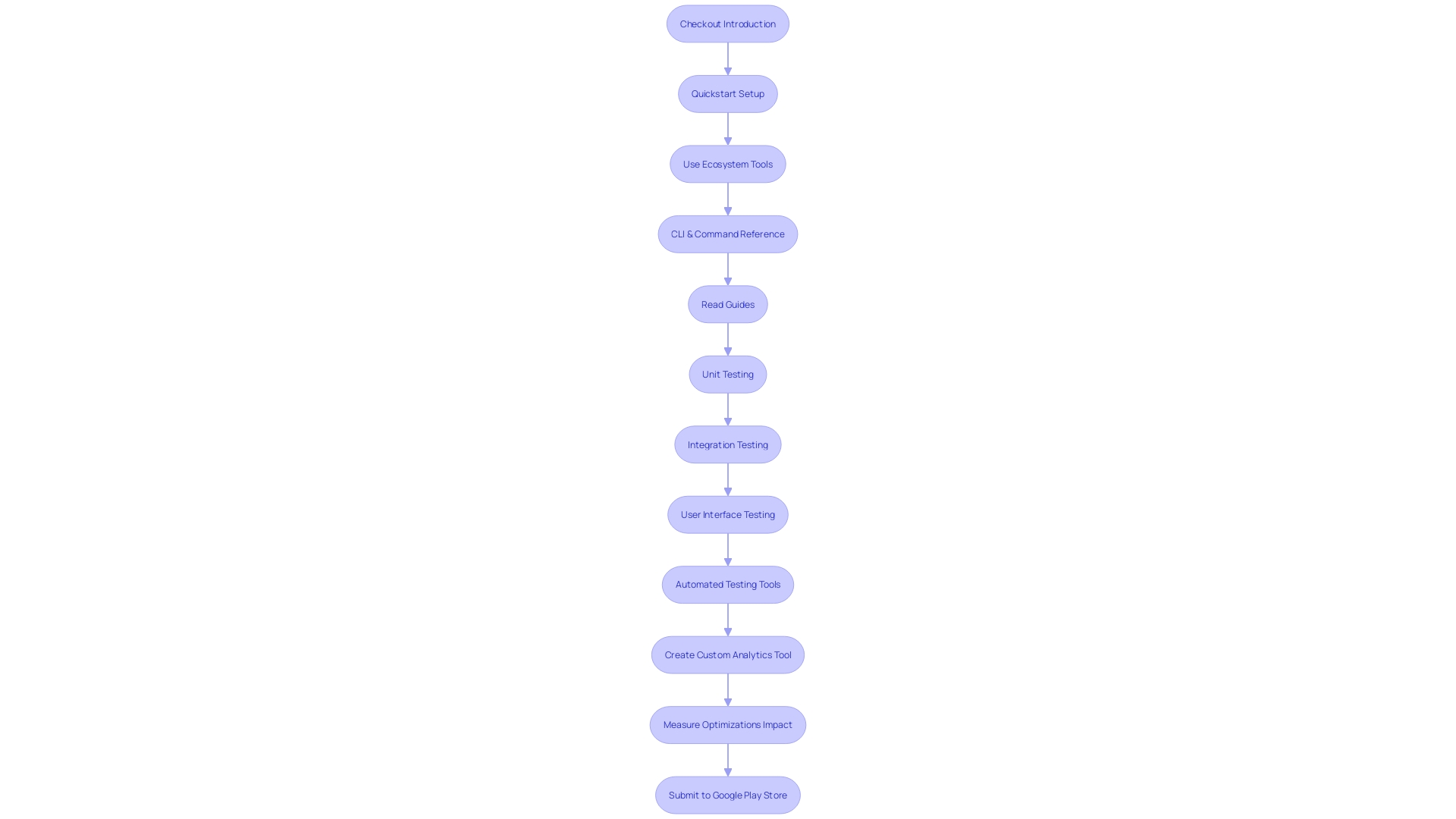
Support and Maintenance of Your Android App
Navigating the post-launch landscape of an Android app requires a proactive approach to ensure continuous improvement and user satisfaction. It's not just about deploying your app to the Google Play Store; it's a perpetual cycle of analyzing user feedback, refining performance, and incorporating fresh features. By initiating an internal test and expanding to a select group of testers, developers can identify issues early on, as recommended for accounts created after November 13, 2023. This testing strategy helps in fine-tuning the app before wider release.
Once the app is live, the focus shifts to maintenance and optimization. For instance, a diligent analysis of the app binary, perhaps using tools like APK Analyzer or Android Studio, is essential. Embracing the principle "If you can't measure it, you can't improve it," is fundamental for successful optimization. Google's expansion of the Android Earthquake Alerts System to all 50 states serves as an example of how continuous improvements can significantly enhance user experience.
Furthermore, user engagement doesn't end with the app's launch. Developers must understand that users need to be prompted to download updates, which often involves more than just making the new version available. Encouraging users to stay updated is critical for accessing the latest features and bug fixes, ensuring the longevity of their devices. With the average smartphone replacement cycle now stretching to 3.6 years, the importance of maintaining an app's relevance over a longer period cannot be overstated.
In the dynamic world of Android app development, staying informed about industry changes, like the Play Store's new visual elements and user engagement strategies, is crucial for developers. As the Director of Android Developer Relations Anirudh Dewani emphasizes, the community's collective efforts have brought forth new delights for users globally, showcasing the importance of the Android ecosystem's evolution.
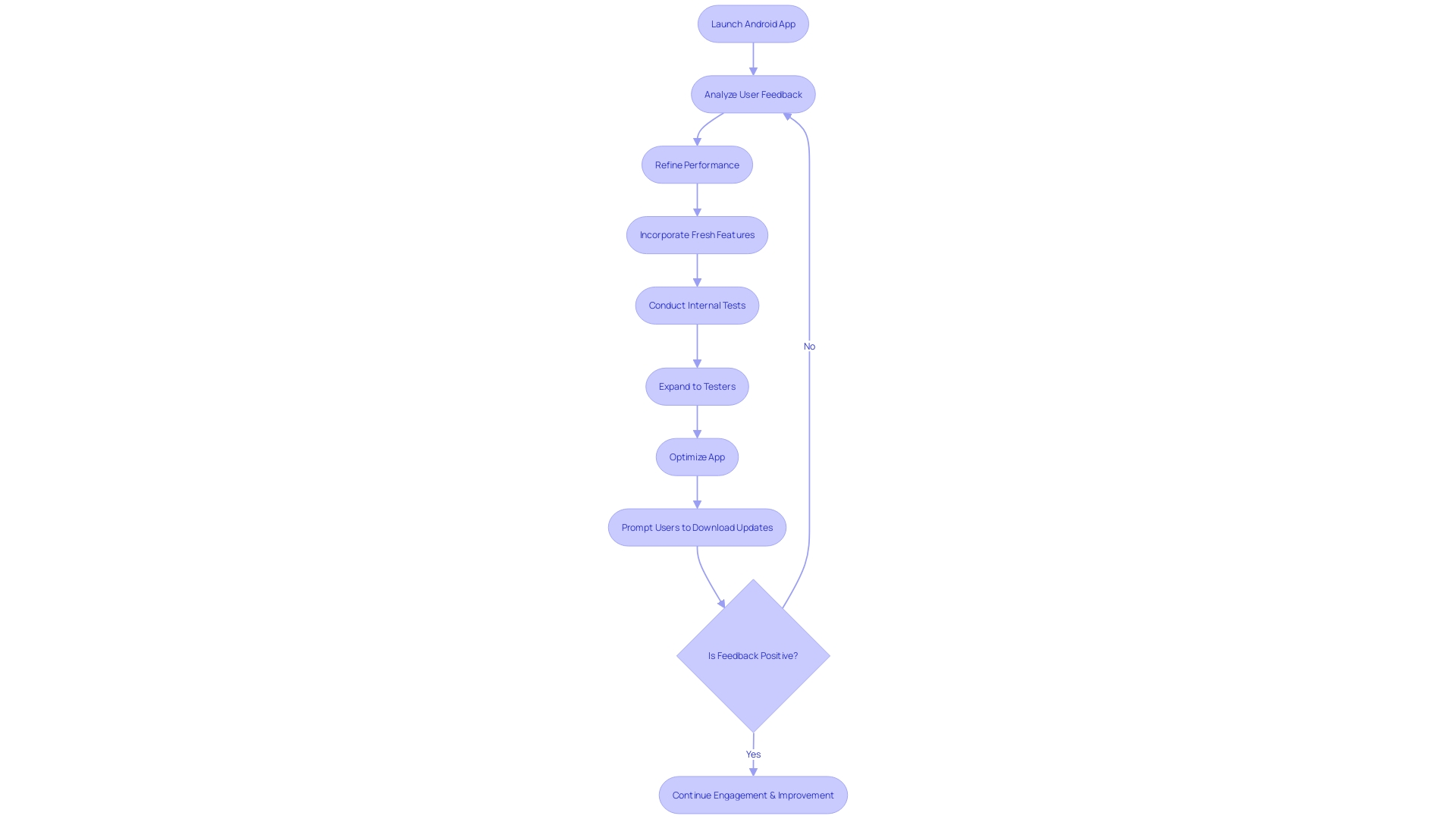
Conclusion
In conclusion, excelling in Android app development requires a keen understanding of the ecosystem, focusing on elements like app performance and staying updated with Google's features. Effective use of product analytics tools and understanding task management maximizes app potential.
Setting up the development environment with Android Studio and precise analysis using tools like APK Analyzer optimize app performance. Integrating core components like activities and services is essential, and staying updated with Google Play's enhancements enriches user experiences.
Creating a compelling UI/UX, optimizing data storage, and utilizing tools like WorkManager enhance the user experience. The app development process involves planning, development, testing, and deployment, with a focus on user-centric development and staying informed about trends and tools.
Meticulous planning, selecting the right tools, and adapting to diverse device configurations are vital. Keeping up with trends and best practices, testing, and continuous improvement ensure app success.
Understanding the Android ecosystem and applying recommended practices empower developers to create successful apps.





